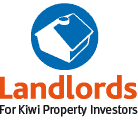Structure for home and income property?
Question from Melanie updated on 16th August 2013:
We recently purchased a home and income. We live upstairs with a boarder (under the IRD threshold) and we have a tenant below in a self-contained flat. The downstairs is about a third of the total property area so for our first tax year it's looking like we'll make $8,000 profit even after writing off a portion of mortgage, rates and insurance. Is there a better approach to reduce the income/minimise tax? I am on 33 % tax rate and my partner is on 30%. Could we have the boarder as a flatmate and therefore claim the total rates etc expenses against combined flatmate and rental income? Or an LTC?
Our expert Mark Withers responded:

Hi Melanie, where you rent out a multi-unit property in which you also reside the rental income must be declared. There are two methods that you can choose from to determine your deductible expenses. Either keep a record of the expenses that relate to the part of the property that you're renting out and claim these against the rental income or alternatively keep a record of the total expenses for the property and apportion these according to the area of the rented out part. If you own the property together the net result will need to be split across your tax returns, be it a profit or a loss. An LTC is unlikely to be a suitable structure given the flat won't be on a seperate title. The predominant use of the property is private and domestic and as such the use of a business structure like an LTC is inappropriate. The LTC will also provide no additional deductible expenses and will only serve to complicate your filing requirements which are currently quite straight forward. Seems to me you are best to stay as you are.
Mark Withers and his team at Withers Tsang & Co specialise in advising on property related transactions, valuation and restructure services and tax planning.
Search the Ask an Expert archive
Browse all questions in the Ask An Expert Archive »

